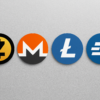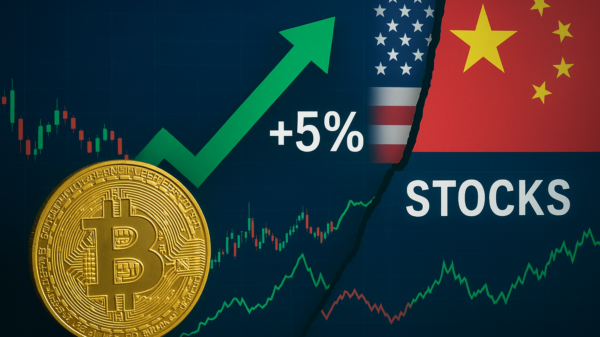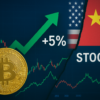Global net gold purchases reached 42 tonnes in October, according to a recent report by the World Gold Council that examined trends in central bank purchases.
The People’s Bank of China was once again the largest buyer of the metal followed by the Central Bank of Turkey and the National Bank of Poland.
Senior analyst at the council and author of the report, Krishan Gopaul found that October saw higher sales volumes compared to the previous two months, which were led by Uzbekistan and Kazakhstan. During the month, the Central Bank of Uzbekistan bought 11 tonnes and the National Bank of Kazakhstan bought two tonnes.
“We have often noted that both banks frequently flip between net buying and selling, which is not uncommon for banks who buy gold from domestic sources,” Gopaul wrote.
The trend of gold becoming a hot commodity this year continues to increase despite seeing a slowdown in October. Global net purchases were 41 per cent lower than in September (72 tonnes) but 23 per cent higher than the January-September average of 34 tonnes.
Global #gold ETFs saw a small outflow of US$920mn (-9t) in November, significantly narrower than the previous month. North America led global inflows while Europe continued to witness sizable outflows. See the data here: https://t.co/uR3LmEtOXV pic.twitter.com/3SkiMu16Hb
— Krishan Gopaul (@KrishanGopaul) December 6, 2023
Read more: U.S. central bank holds highest volume of gold reserves: Forex Suggest
Read more: Gold prices to reach record levels if Israel-Hamas conflict continues to escalate, says Newmont CEO
China’s central bank spearheads gold purchases for the twelfth time
In November, official data from the People’s Bank of China indicates an increase of 11.8 tonnes in its official gold reserves. With this addition, the Year-to-Date (YTD) net purchases now stand at 216 tonnes, pushing the total gold holdings to 2,226 tonnes, marking an 11 per cent increase from December 2022.
China’s bank bought the most gold for the twelfth consecutive month, reporting 23 tonnes of gold added to its reserves. Its YTD purchases reached 204 tonnes and its total reserves to 2,215 tonnes.
“Despite the significant increase, reported gold reserves still account for just 4 per cent of the bank’s total international reserves,” reads the report.
In second place, the Central Bank of Turkey bought 19 tonnes and increased its reserves to 498 tonnes.
Besides China and Turkey, other countries were more modest in their October gold purchases.
The National Bank of Poland added six tonnes to its reserves which totalled 340 tonnes. Other countries such as India added three tonnes, the Czech National Bank two tonnes, and the National Bank of the Kyrgyz Republic and the Qatar Central Bank bought one tonne each.
“Even before October’s net buying, we noted that 2023 was likely to be another colossal year of central bank buying. Having started Q4 positively, this year’s central bank demand looks set to climb even higher.”
Central banks added a net 42 tonnes to global official gold reserves in October. Get the data: https://t.co/yT1WM0kcNP pic.twitter.com/g8gTMpwDhU
— World Gold Council (@GOLDCOUNCIL) December 5, 2023
Read more: World Gold Council members commit to gold supply chain transparency
Read more: Increase in gold demand points to strong global market: World Gold Council
Gold outlook in 2024: three possible scenarios
In a separate report, the World Gold Council discussed the potential scenarios for the economic and market conditions in 2024 for the gold market.
Analysts found three possible scenarios in the upcoming year, including a market consensus anticipating a “soft landing” in the U.S., where the growth of an economy slows down gradually without experiencing a full-blown recession. Achieving a ‘soft landing’ is historically rare, with seven out of nine tightening cycles leading to a recession.
The second scenario includes geopolitical tensions and central bank buying to support the metal during the cycle.
The third one is the possibility of a global recession, which will incite investors toward gold. Various indicators suggest a moderate to significant chance of a recession in the next 12 months.
Besides a soft landing or recession, a ‘no landing’ scenario is considered, characterized by a reacceleration of inflation and growth.

Economic scenarios and factors that impact gold based on key drivers. Table via World Gold Council.
Gold’s performance is influenced by economic expansion, risk, opportunity cost and momentum.
In a soft-landing scenario, gold returns have historically been flat. During recessions, gold and high-quality government bonds tend to perform well. In a “no-landing” scenario, challenges for gold may arise initially due to higher rates and a stronger US dollar.
Recently, geopolitical risks and central bank demand have positively impacted the metal’s performance and major elections may increase the need for portfolio hedges. These hedges are investment strategies or assets included in the portfolio of a company to offset losses from other investments. They reduce risk and protect the overall value of the investment portfolio during market downturns or periods of increased volatility.
The probability of a recession, geopolitical risks and ongoing central bank demand support the strategic allocation of gold investments in portfolios. Meanwhile, its performance drivers include economic scenarios, risk, opportunity cost and momentum, according to the report.
Read more: Calibre Mining joins Mining Association of Canada
Recession, inflation, geopolitical risks are favourable gold producers
Gold producers’ performance is closely tied to the broader economic environment and factors influencing the demand for gold. While a soft landing may present challenges, other scenarios such as a recession, inflationary pressures, geopolitical risks and central bank demand can offer favourable conditions for gold producers.
In the first half of 2023, the top 10 gold producers increased their collective gold production by 3 per cent, mining a total of 13.9 million ounces, surpassing the output during the same period in 2021.
The World Gold Council predicts a continued rise in gold production throughout 2024. This positive outlook is driven by the ongoing expansion of existing mining projects, particularly in North America. The council sees the chances of achieving a record mine output as higher if gold prices continue to rise.
Leading gold companies have significantly contributed to gold production this year.
Newmont Corporation (NYSE: NEM, TSX: NGT) claimed the title of the world’s largest gold producer, contributing 1,291 thousand ounces (koz) to global production during Q3. Barrick Gold Corporation (NYSE: GOLD) (TSX: ABX) secured the second position, recording a gold production of 1,039 koz in the third quarter, marking a 5.2 per cent increase compared to the same quarter in the previous year. Agnico Eagle Mines Limited (NYSE: AEM) (TSX: AEM) held the third spot, reporting a payable gold production of 850 koz in Q3 2023, showing a 4 per cent rise from the third quarter of 2022.
Mid-tier gold producers, key players in the industry
Mid-tier gold miners provide a substantial portion of global gold production and play a key role in exploration and development. Their strategic importance is particularly highlighted through targeted acquisitions, which not only improve their production capacity but also foster operational efficiency and sustainability in the industry.
Three weeks ago, the Canadian gold miner Calibre Mining Corp. (TSX: CXB; OTCQX: CXBMF) announced it would buy Marathon Gold in a deal worth around $250 million. Calibre is also planning to buy about 66.7 million shares at US$0.45 each, giving Marathon about 14 per cent ownership after the transaction is done. Calibre’s prominent investor, B2Gold Corp. (TSX: BTO) (NYSE AMERICAN: BTG) (NSX: B2G) has agreed to support the deal by voting in favour of it.
Argonaut Gold Inc. (TSX: AR) another Canadian gold company, achieved its first gold pour at the Magino mine in Northern Ontario in mid-June this year. Magino is forecasted to produce 72,000 to 81,000 ounces of gold in 2023, with cash costs between $850 and $950 per ounce. Anticipating further growth, Magino is projected to yield approximately 148,000 ounces in 2024 at a cash cost of $868 per ounce.
Calibre Mining is a sponsor of Mugglehead Magazine coverage














